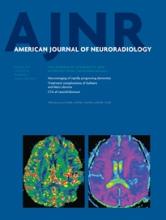Abstract
BACKGROUND AND PURPOSE: Carotid blowout is a serious late complication of prior treatment of advanced head and neck cancer. We evaluate the efficacy of CTA in the diagnosis of impending carotid blowout syndrome in patients with head and neck cancer, and its capability to predict clinical outcome.
MATERIALS AND METHODS: The clinical data of 29 patients with impending carotid blowout who underwent CTA were collected and analyzed. Imaging signs included tissue necrosis, exposed artery, viable perivascular tumor, pseudoaneurysm, and contrast extravasation. DSA was obtained in 20 patients. One-year outcomes were compared based on management.
RESULTS: The most common CTA finding was necrosis (94%), followed by exposed artery (73%), viable tumor (67%), pseudoaneurysm (58%), and contrast extravasation (30%). Exposed artery, pseudoaneurysm, and contrast extravasation were the 3 CTA findings related to outcomes. All of the pseudoaneurysm and contrast extravasation cases were associated with an exposed artery. An exposed artery was the most important prognostic predictor and could not be diagnosed on DSA. Patients without the 3 findings on CTA (group 1) had the best survival rate at 1-year follow-up, followed by patients with the 3 findings treated immediately by permanent artery occlusion (group 2). Patients with the 3 findings who had no immediate treatment (group 3) had the worst outcomes (P < .001 in group 1 vs group 3 and group 2 vs group 3; P = .056 group 1 vs group 2).
CONCLUSIONS: CTA, with its ability to diagnose an exposed artery compared with DSA, may offer important management and prognostic information in patients with impending carotid blowout.
ABBREVIATIONS:
- CBS
- carotid blowout syndrome
- PAO
- permanent arterial occlusion
- © 2014 by American Journal of Neuroradiology
Indicates open access to non-subscribers at www.ajnr.org












